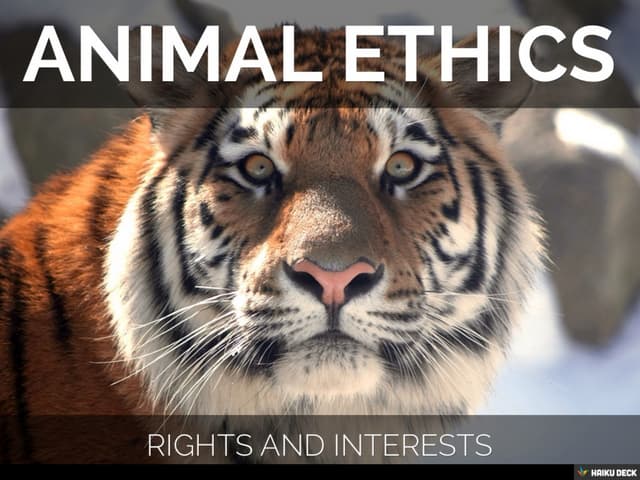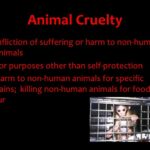The intricate web of animal behavior preoccupies those who seek to understand not just biology but also the ethical ramifications entwined with it. Do animals possess the capacity to feel cruelty? Alternatively, do they exhibit behavior that could be construed as cruel? These questions permeate discussions on animal ethics, fostering a profound intellectual curiosity about the nature of animals and our moral obligations towards them. By examining both the emotional experiences of animals and the implications of their interactions with one another and with humans, we can glean invaluable insights into the ethical considerations surrounding animal welfare.
In seeking to understand whether animals can feel cruelty, it is imperative to first dissect the notions of pain and suffering that permeate their existence. Numerous studies have demonstrated that many species experience emotions similarly to humans. For instance, mammals such as dogs and primates exhibit behaviors that suggest a nuanced understanding of their environment and the feelings of others. This emotional capability prompts the inquiry into whether they are susceptible to suffering from cruel treatment. Scientific evidence indicates that animals can, indeed, experience distress and anguish as a direct result of mistreatment. The physiological responses of animals to deleterious conditions—elevated stress hormones and defensive behaviors—underscore their capacity for such experiences.
However, the understanding of cruelty transcends simple definitions of pain. It encapsulates a diverse spectrum of adverse experiences, ranging from emotional agony to physical maltreatment. While it is relatively straightforward to comprehend that animals can endure physical pain, the emotional ramifications of unchecked cruelty warrant our attention. Affective neuroscience has revealed that many species exhibit empathy, altruism, and even mourning. For example, elephants are known to grieve for deceased companions, a phenomenon indicative of deep emotional bonds and an awareness of loss that mirrors human concerns regarding the treatment of others. This acknowledgment complicates the narrative surrounding animal cruelty, revealing a labyrinth of emotional and ethical considerations.
Contrastingly, the question of whether animals commit cruelty is equally perplexing. Instances of aggressive behavior in the animal kingdom are often observed, leading to assertions that animals can indeed act in ways that can be deemed cruel. Dominance struggles in social species, such as wolves or chimpanzees, showcase a complex interplay of power dynamics. In these cases, the aggressor may inflict physical harm upon subordinates, ostensibly to assert status or establish territorial claims. This brings forth an ethical quandary: are such actions instinctual manifestations of species in a natural struggle for existence, or do they stem from a more profound understanding of suffering and harm?
To disentangle this morphological conundrum, it is essential to analyze the motivations behind such behavior. In many instances, it appears that aggressive actions in animals arise from evolutionary adaptations geared toward survival. Predatory species exhibit lethal behaviors honed for predation; however, these acts cannot merely be classified as cruelty since they are embedded within the context of ecological balance. Conversely, behaviors that lead to intra-species conflict, particularly those not directly associated with survival—such as bullying among social animals—raise unsettling questions regarding the moral fabric underpinning animal interactions. The implications of these behaviors extend beyond the immediate context, inviting further reflection on the societal structures that foster such cruelty.
The discourse on animal cruelty necessitates a nuanced approach that considers both the capacity for emotional response in animals and the contextual factors influencing their behavior. Ethical theorists espousing utilitarian perspectives often argue that the negative consequences of actions, whether committed by humans or experienced by animals, are paramount. While it is crucial to acknowledge the emotional capacities of non-human animals, a simplistic interpretation of cruelty can obscure larger systemic issues that perpetuate suffering.
One must also contemplate the moral responsibilities that humans bear in this dialogue. The anthropocentric lens has long dominated discussions surrounding animal welfare, skewing perspectives towards the belief that cruelty measures should solely concern the suffering of domesticated animals. This narrow focus allows the persistent malaise of industrial farming, habitat destruction, and ecological degradation to persist unchallenged. The ethical implications extend to our treatment of all sentient beings, demanding a reevaluation of our hierarchies of value within the biosphere. Rather than isolating discussions of cruelty as purely contextual or instinctual, acknowledging the interconnectedness of species invites an opportunity for advocacy that seeks justice for all sentient life forms.
In summation, the question of whether animals feel cruelty or commit it hinges on a myriad of emotional, behavioral, and ethical considerations that inextricably link animals’ lives with those of humans. The exploration of animal emotions and motivations opens avenues for deeper understanding that can inform our approach to animal welfare. The intertwining of human ethics with animal interactions demands a critical examination of the narratives we construct surrounding cruelty. It compels us to confront our role within increasingly complex food webs and ecological systems, where understanding the emotional landscape of animals is as vital as acknowledging our ethical responsibilities in mitigating suffering. In fostering awareness of their experiences, we edge closer to being responsible stewards of a world shared with sentient beings.








